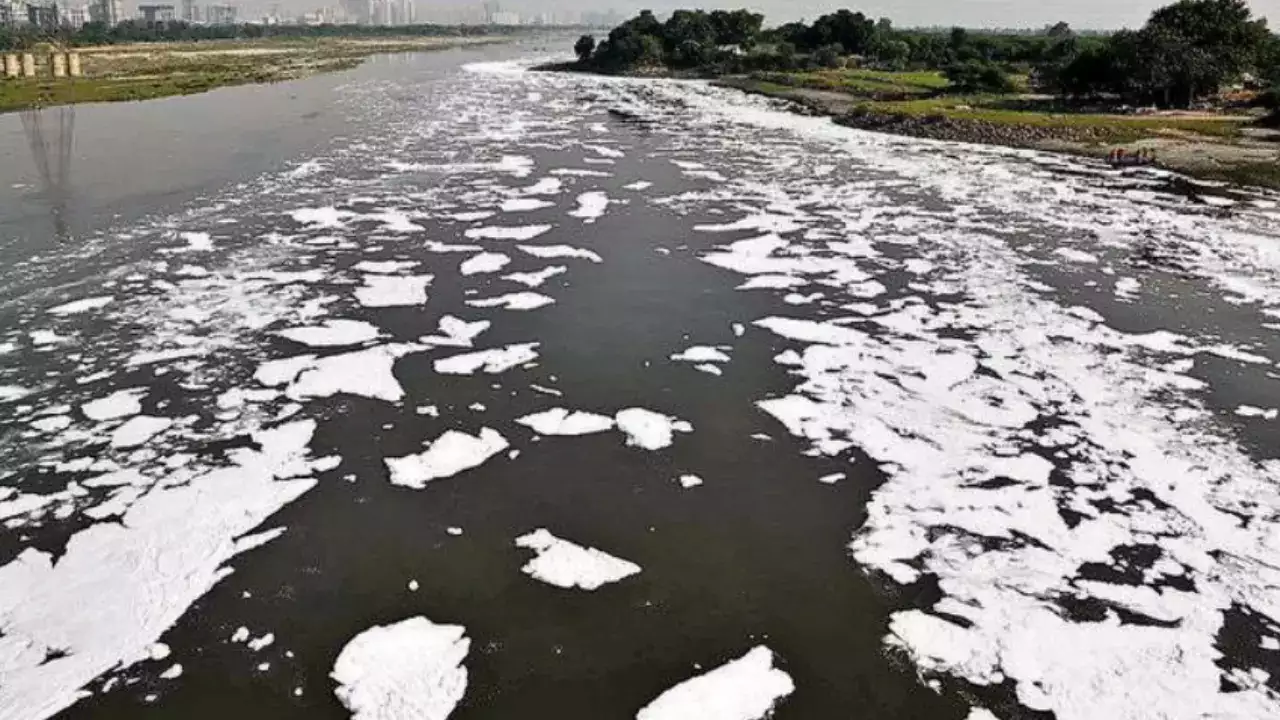The water supply in the national capital has been affected as the level of ammonia increased in the River Yamuna. The increasing ammonia level in the Yamuna has been a persistent problem for Delhiites. Every winter season, people in Delhi have to endure scarcity of drinking water due to the elevated level of ammonia in the Yamuna.
The issue of high ammonical nitrogen concentrations in the Yamuna during the winter is not new. Between December and March each year, treatment plants have to either shut down or operate at reduced capacity several times, as the system can handle ammonia only up to 1 part per million (ppm). However, the level of ammonia has spiked up to 5 ppm, resulting in a challenge for a key water treatment plant in the national capital, which supplies water to several parts of south Delhi.
The Wazirabad plant receives water from two sources: the carrier-lined channel, or Munak Canal, and the Yamuna River Stream. While the canal is regulated, preventing effluent from industries to be dumped into it as it travels through Haryana into Delhi, the same does not hold true for the river channel. As it flows through, hundreds of industries discharge untreated waste into it. By the time the Yamuna enters Delhi, the water is highly polluted.
A source from the Wazirbad water treatment plant mentioned that they use chlorination to neutralize ammonia in water. They stated that 11.5 kg of chlorine is needed per liter of water per hour to neutralize 1 ppm of ammonia. At Wazirabad Water Treatment Plant 1, which produces 45 million gallons daily, the amount of chlorine needed to treat 1 ppm of ammonia is around 97 kg per hour. However, its installed capacity is 60 kg per hour, according to the source.
The problem exacerbates in winter due to decreased efficiency of the chlorination plant. “As the temperature drops, icing at the chlorination plant increases, and it can operate only at around 25% to 50% capacity. The machines are 10-15 years old, and they do not operate at 100% capacity in any case. The water supplied last week was not fully treated,” the source said.
However, an official responsible for quality control at the Wazirbad plant informed that they reduced the treatment capacity to address the issue, resulting in water scarcity in the vicinity.
Meanwhile, The Sunday Guardian spoke with Rajeev Suri, an urban environment activist, to gain better understanding of the situation. He told The Sunday Guardian that we are responsible for the issues, as we are polluting not just the Yamuna, but other rivers too.
“We should not pollute our rivers. We should not over-abstract our rivers. But that’s what we’re doing—violating every environmental rule. We’re not safeguarding our natural resources. And as a consequence of that, this is happening,” said Suri.
He added, “Currently, Delhiites are receiving water, but in two or three years from now, people in Delhi may not even have this luxury. As you can see, there have been reports that all the glaciers are drying up. So where will we get our water from? These are major issues. They have no easy solutions.”

